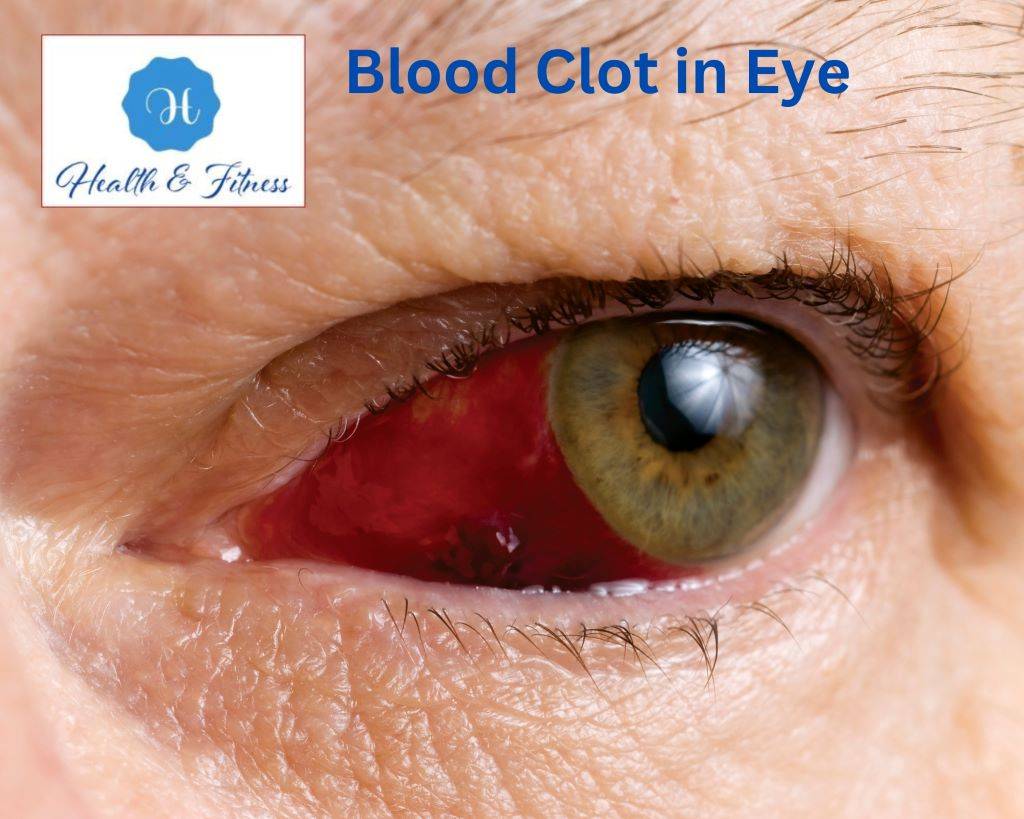Blood Clot in Eye: Causes, Risks, and Prevention Strategies
Learn about the causes, risks, and prevention of blood clot in eye. Essential insights for eye health.
Key Takeaways:
- Diabetes, hypertension, smoking, and cholesterol increase the risk of blood clots behind the eyes.
- Sudden vision changes like blurriness or floaters warrant rapid medical care to prevent blindness.
- Potential complications from untreated clots include glaucoma, retina damage, and stroke.
- Preventive steps like exercise, hydration, blood thinners, and managing health conditions lower risks.
- Acting quickly when symptoms occur allows the best chance of vision recovery after a clot.
- Following your doctor’s treatment plan closely after diagnosis is vital to healing damaged eyesight.
Introduction
A blood clot in eye or Retinal Thrombosis is a concerning condition that can lead to vision problems or damage if left untreated. Blood clots form when the blood thickens and clumps together, blocking proper blood flow. While clots can occur anywhere in the body, having one behind or within the eye requires urgent medical care.
In this comprehensive guide, we’ll cover what causes a blood clot in eye, who’s at risk, warning signs, potential complications, and ways to help prevent clots from forming. Understanding the risks and treatments for this condition is crucial for protecting your eyes and vision.
What Causes Blood Clots in the Eye?
There are several causes and risk factors for developing a blood clot in eye:
- Diabetes – High blood sugar levels can damage blood vessels and make blood more prone to clotting. Diabetic retinopathy causes abnormal blood vessels to grow in the retina.
- Hypertension – High blood pressure strains blood vessel walls, also increasing clot risk.
- Cholesterol – High cholesterol levels make blood thicker and slower moving, raising clot potential.
- Smoking – Chemicals in cigarettes damage blood vessels. Smokers have a higher risk of clot-related eye issues.
- Dehydration – Thick, sludgy blood is more prone to clots. Dehydration thickens the blood.
- Blood disorders – Conditions like sickle cell disease or autoimmune disorders boost clot risk.
- Pregnancy – Hormone changes and fluid retention encourage clots.
- Birth control pills – Estrogen in pills can increase risk.
- Eye surgery or injury – Trauma to the eye may trigger clotting as part of the healing process.
- Older age – As we age, blood vessels stiffen and blood thickens, increasing clot potential.
Symptoms of a Blood Clot in Eye
How can you tell if you have a blood clot in eye? Here are some common symptoms:
- Sudden, painless vision loss, or blurriness in one eye
- Dark, obscuring spots in the vision,
- Light flashes in peripheral vision
- Floaters that appear suddenly and densely
- bulging of the eye
- Headache or eye pain
- A dilated pupil with a sluggish reaction to light
- Vision that is worse at night
- Redness inside the eye
If you experience any vision changes, seek medical evaluation right away. Rapid treatment of an ocular clot is vital for preserving eyesight.
Potential Complications and Risks
Left untreated, a blood clot in eye can lead to:
- Permanent vision loss – A clot that remains for long blocks of blood and oxygen flow to the eye, resulting in damaged optic nerves, retina, and vision.
- Glaucoma – Pressure builds up inside the eye because of poor fluid drainage from a clot. This damages the optic nerve.
- Retinal detachment – The retina peels away from blood vessel blockages. This causes blind spots or vision loss.
- Neovascular glaucoma – New abnormal blood vessels form, causing severe glaucoma and pressure.
- Stroke – A clot from the heart can travel to arteries in the eye or brain, causing stroke.
That’s why prompt treatment is so important for any eye-related clots or blockages. Don’t delay if symptoms arise.
Who’s at Risk for Blood Clots in Eye?
Those with the following factors have an increased risk of a blood clot in eye:
- Diabetics, especially with diabetic retinopathy
- People with high blood pressure
- Those with high cholesterol
- Smokers
- Individuals with carotid artery disease
- People with blood clotting disorders
- Individuals who recently had eye surgery
- Pregnant women or those taking birth control pills.
- People with autoimmune diseases like lupus
- Cancer patients receiving chemotherapy.
- Obese individuals
- Anyone severely dehydrated or sedentary
- Older adults over 60
Evaluating risk factors can help guide preventative steps. Those at higher risk should take extra precautions and monitor their vision carefully.
Preventing Blood Clots in Eye
While clots can’t always be prevented, you can reduce the risks through these proactive measures:
- Control medical conditions like diabetes and high blood pressure – Keep levels well-managed through medication, diet, and doctor monitoring.
- Lower cholesterol – Eat a low-fat diet and exercise; take cholesterol medication if prescribed.
- Quit smoking – Stop smoking to improve blood vessel function immediately.
- Hydrate regularly – Drink plenty of water daily to keep blood from thickening.
- Take frequent breaks – Get up often if doing near-vision work. This rests the eyes and improves circulation.
- Eat blood-thinning foods – Garlic, ginger, ginkgo, and omega-3 help thin the blood.
- Exercise daily – Aerobic activity energizes circulation and lowers clot risk.
- Wear compression garments – For those prone to clots, compression stockings improve blood flow.
- Limit alcohol – Heavy alcohol thickens the blood, so drink only in moderation, if at all.
Making key lifestyle changes reduces the likelihood of vision-threatening clots. But even with precautions, seek help at the first sign of symptoms.
Diagnosing a Blood Clot in Eye
To check for a blood clot in the eye, an ophthalmologist will do a comprehensive eye exam, including:
- Medical history review – Looking for underlying conditions, risk factors, and symptom patterns.
- Visual acuity assessment – Checking vision sharpness for changes.
- Refraction test – Assessing lens prescription needs.
- Eye pressure measurement – Unusually high pressure may indicate a clot.
- Pupil dilation – Dropping the pupil to see the back of the eye.
- Ophthalmoscopy – Examining retina, vessels, and optic nerve for clots.
- Eye imaging – Photos, scans, or OCT reveals blood flow blockages.
Catching clots early is key, so see an eye doctor promptly if any vision changes occur suddenly. Quick action prevents permanent damage.
Treating Blood Clots in Eye
Treatment depends on the size, location, and cause of the blood clot in eye. Options may include:
- Medications – “Clot-busting” tissue plasminogen activator drugs dissolve clots. Anticoagulants also prevent clot enlargement.
- Eye injections: Steroid injections reduce swelling and inflammation from clots.
- Surgery – A needle or catheter can remove problematic clots harming vision.
- Laser surgery – Thermal lasers cauterize leaky blood vessels, causing recurring clots.
- Lifestyle changes – Diet, exercise, smoking cessation, and controlling medical conditions.
Follow all your eye doctor’s treatment instructions carefully. Prompt therapy is the best way to restore vision affected by a blood clot.
Hope for Vision After an Eye Clot
A blood clot in eye is certainly a scary, vision-threatening condition. But catching it early and following your doctor’s recommended treatment plan offers real hope for regaining your eyesight.
Many people fully recover vision after prompt clot removal and anti-clotting medications. Taking preventative steps also reduces your risk. So be proactive against clot risk factors, but also react quickly if sudden vision changes do occur – fast action makes all the difference.
FAQs frequently asked questions
How do you treat a blood clot in the eye?
Treating a blood clot in the eye starts with seeing an ophthalmologist right away. They’ll examine your eyes closely and may prescribe “clot-busting” medications to dissolve it. For larger clots, surgery to remove it may be needed. Your doctor might also recommend injections, laser treatment, or lifestyle changes to improve your blood flow. Following the treatment plan closely is key to preventing permanent damage and restoring your vision after an eye clot.
Should I worry about a blood clot in my eye?
Yes, you should see a doctor immediately if you suspect a blood clot in your eye. A clot is a medical emergency that requires prompt treatment. Without fast attention, it can lead to vision loss, glaucoma, retinal detachment, and even stroke. Don’t wait days or weeks to get checked out. See an ophthalmologist or go to urgent care the same day if you notice sudden vision changes, spots, floaters, or eye pain. Catching it early makes recovery much easier.
Is blood in an eye emergency?
Blood in or behind the eye is an emergency to get evaluated promptly. It likely signals a serious issue like a blood clot, detached retina, injury, or burst blood vessel. Don’t wait days to see if it goes away. See an ophthalmologist or eye doctor right away or go to urgent care or the ER. The sudden onset of blood in the eye could permanently damage your vision if not treated quickly. Don’t take chances with your eyesight.
What causes blood in your eye?
There are a few causes of blood in the eye:
- Blood clot – clots block proper blood flow.
- Retina injury – tears or detached retina bleed
- Diabetic retinopathy – abnormal blood vessels burst.
- Severe hypertension – high blood pressure damages vessels
- Blood disorder – diseases like leukemia or sickle cell
- Eye trauma – hit or scratch causes bleeding
- Aging – fragile vessels break more easily.
Any sudden blood in the eye signals serious trouble requiring prompt medical care. Don’t hesitate to get checked out.
Can eye blood is serious?
Yes, blood coming from the eye is always a serious symptom warranting urgent medical care. It indicates a major issue like a torn retina, clot, burst blood vessel, injury, or high blood pressure. Left untreated, eye bleeding can quickly lead to permanent vision loss or blindness. Don’t wait to see if it clears up. Seek emergency care right away to determine the cause and prevent damage to your vision. Don’t take chances with eyesight.
Can eye bleeding cause blindness?
Yes, eye bleeding can cause blindness if left untreated. Blood leaking into the eye blocks light and oxygen from getting through normally. Over time, this damages the optic nerve and retina, destroying vision abilities. That’s why it’s so important to seek emergency medical care as soon as you notice any blood coming from the eye. Acting fast gives you the best chance to stop bleeding, prevent blindness, and save your eyesight.
In Conclusion
A blood clot in eye is a serious condition requiring emergency care. Clots stem from thick, sluggish blood, often because of underlying medical issues. Symptoms like sudden vision loss, floaters, and eye pain should be evaluated urgently to prevent permanent damage. Controlling clot risks through healthy lifestyle choices is wise. But even with precautions taken, seek treatment at the very first sign of symptoms for the best outcome. With blood clots, vision, and time are preciously linked.



